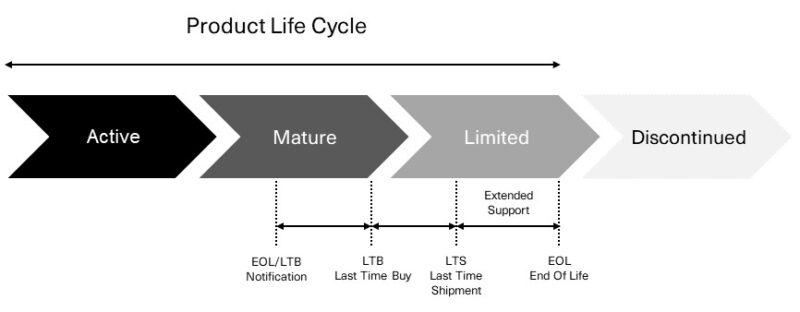Product Life Cycle
Overview
At SOC-E, we understand the critical importance of extending Product Life Cycle to meet the enduring requirements of our customers. We are committed to maintaining products in active production for as long as there is demand, components are available, and support remains feasible. Our approach includes implementing a variety of strategic measures to proactively manage and mitigate the impact of component and product obsolescence, ensuring continuity and reliability in our solutions.
Our commitment goes beyond product delivery. We provide comprehensive life cycle support, ensuring our solutions meet the functional, environmental, and operational requirements outlined by our customers’ specifications. Our comprehensive support services encompass rigorous testing, quality assurance, and logistical expertise, ensuring seamless integration and operational readiness throughout the life cycle of each product.
SOC-E’s dedication to longevity, customer satisfaction, and reliability underscores our mission to deliver robust solutions that exceed industry standards and support our customers’ ongoing success.
At SOC-E, the life cycle of each product is managed according to the schema depicted in the image below. This cycle consists of three phases: Active Phase, Mature Phase, and Limited Phase. Together, these phases ensure a minimum product lifetime of at least 10 years, from product introduction to discontinuation.

Active Phase
This phase starts with the initial and formal release to production. As an Active product, the product is improved and maintained as needed from a hardware, software and documentation perspective. Hardware updates and revisions may be issued, e.g. because of active component obsolescence management. New software versions, including new functionality, cyber security updates and bug corrections will be made available for the product.
Mature Phase
In the Mature phase, the product remains actively promoted, sold, manufactured, maintained, and supported. During this phase, critical updates are provided for hardware, software, and documentation. Hardware revisions may be introduced as part of active component obsolescence management. A product typically enters the Mature phase when a successor becomes available, it uses legacy technology, or due to evolving industry standards.
Limited Phase
During the Limited phase, the product is no longer actively marketed and generally unavailable for new orders. However, it continues to receive full support and remains repairable. Adequate logistics planning and investments in components are essential to ensure comprehensive support throughout this phase. In some cases, alternative and equivalent products or parts may be offered to support customers’ ongoing needs.
End of Life Policy
The SOC-E End of Life policy covers the period from the End of Life (EOL) notification until the End of Support (EOS) notification, including intermediate phases as Last Time Buy (LTB) notification and Last Time Shipment (LTS) notification.
Following that practice, and as depicted in the image above, SOC-E typically provides a 6-month advance notice before the Last Time Buy date for the affected product. This notice will be posted on the SOC-E website. Customers and partners are advised to regularly monitor the website for updates and information regarding the End of Life process. The EOL notification will specify the Last Time Buy date, Last Time Shipment date and End of Support date for the products mentioned in the notification.
This Product Life Cycle approach applies only to equipment and modules, and it doesn’t apply to IP cores.